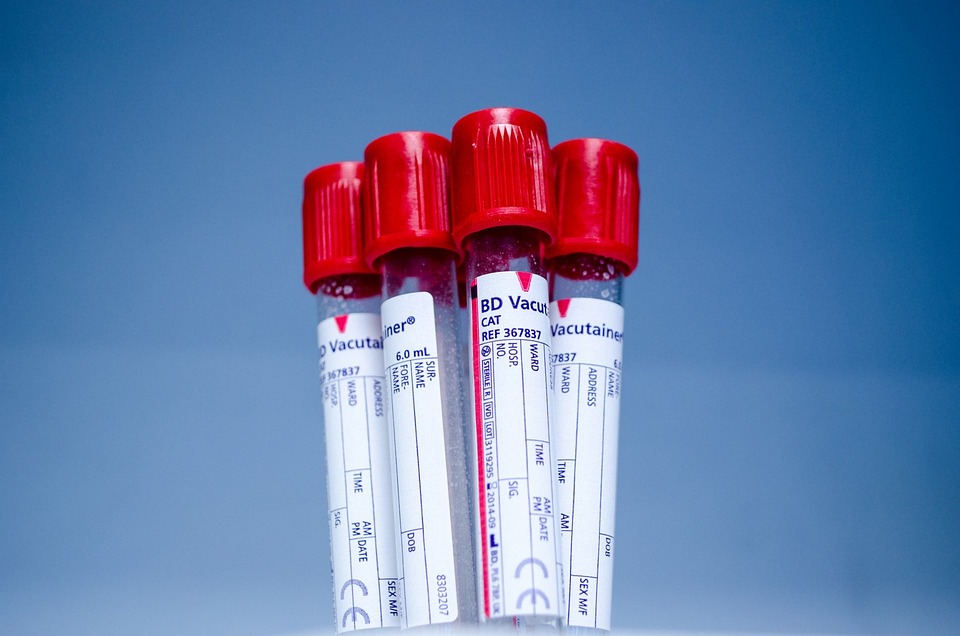About 15 years ago, I led the restructuring and re-launch of a small product division of a company in the heating, ventilation and air conditioning (that is, the “HVAC”) industry. Talk about an industry steeped in tradition. It’s the domain of plumbers, electrical contractors and a/c installers, many of whom who spend decades in the business – and many come from several generations of HVAC contractors.
I was the new guy to the industry, so I simply followed many of the traditional tactics to launch and introduce the new products we created: booth attendance and meetings at regional and industry trade associations, traveling to meet and train our wholesale product distributors, taking customers to pay golf, distributing product flyers at HVAC supply shops, and the like.
The main tradeshow was the ASHRAE Conference (sponsored by the American Society of Heating, Refrigerating and Air-Conditioning Engineers, founded in 1894 with over 50,000 members). Held annually, Conference is a true behemoth, with thousands of attendees and the place to showcase new products. Its publications and newsletters (all print back then) were the key avenues to place print ads. ASHRAE wasn’t a thought-leader and gatekeeper of the HVAC industry; it was THE leader.
Some Things Have Changed; Others Haven’t
When I think back at that time (extremely fondly), I think how similar many aspects of the strategy development process remain the same today. When we created the re-launch strategy for the division, I first dug up my articles on the Porter “Five Forces” model, the Peters “Seven S Model,” and the “7 Steps” of creating a marketing strategy taught at most business schools to create a framework to study the industry and mine its opportunities. These models are still taught at business schools and, indeed, our strategy teams at Growthink and many of our clients use them as a starting point to develop their business plans.
I also can’t help but notice how things have radically changed. I had an AOL email account in the early 90’s, but few websites existed. Since the launch of Netscape’s Navigator web browser in the mid-90s, however, the Internet has changed countless aspects of virtually every business – even the old school HVAC industry. Within a couple seconds, one can “Google” new product information and read the press releases of competitors announcing their corporate focus. If one’s competitors are public, meaning listed on a stock exchange, the firm’s various financial statements and other documents can be found online. Competing products and their prices are also listed online. An HVAC product manager can quickly determine if another competitor has been bought, and imply what his company (or division) is worth based on the acquisition announcement. The Internet allows for almost instantaneous market research.
One of the Most Powerful Windows Opened by the Internet for Entrepreneurs – At Least For Now
The most recent change has happened so fast, on so many levels, that the shift on the Internet towards immediate communication and interconnectedness among people has surprised even those of us who follow technology trends and opportunities. It’s called social networking.
Blogs. Wikis. Twitter. Facebook. YouTube. LinkedIn. MySpace. Classmates.com. They seemed to appear overnight. These networking sites allow someone with Internet access to connect with old friends, post videos of her prom (that occurred ten years ago), and create a professional description on a website and link up with industry colleagues. “Bloggers,” or those who write about topics on a website, have risen from complete obscurity in a particular field or subject to the status of blogosphere rock stars with millions of followers.
If you have a business and you don’t know about LinkedIn, it’s time you figured it out. LinkedIn, as the site says, “is an interconnected network of experienced professionals from around the world, representing 170 industries and 200 countries. You can find, be introduced to, and collaborate with qualified professionals that you need to work with to accomplish your goals.” In short, it’s a bunch of online resumes and personal profiles – about 53 million as of today. Like FaceBook, it allows you to connect to various people in your network and meet others. You can find other people in your industry by search key words just like you would on Google. To post a basic profile, it’s free.
Like a lot of people, I resisted joining LinkedIn at first. The thought of having a profile of my entire professional and educational background seemed, well, weird. But as more and more of my colleagues and friends joined, I finally caved. Several months later, I am now finding some of my clients through my account on LinkedIn, or they are finding me. (Suggestion: if you don’t have an account on LinkedIn, stop reading now and create one. Then come back and finish the article.)
ASHRAE, What’s ASHRAE?
I mentioned at the beginning of this column the sheer importance of the annual ASHRAE Conference and accessing its members 15 years ago when we were launching a new product. Why don’t you create your own virtual ASHRAE to develop a professional network and build your brand? Simply use LinkedIn’s “Group” function.
Anyone can create a Group on LinkedIn. Groups are collections of LinkedIn members who have joined them due to a common affiliation, such as an alumni group (“Ohio State Alumni”), or a company relationship (“Microsoft – Current and Former Employees”). As of several months ago, there were a few groups and the site had limited searching capability to find them. Now there are over 309,000. We’re likely facing an inflection point on LinkedIn right now: there’s a critical mass of members and existing groups, yet still opportunities to develop a strategic niche on the site.
Let’s say you’re a venture investor and want to build a presence on LinkedIn to access other professionals, possible deals, industry news, etc., you could think about starting a group related to venture capital. Unfortunately for you, these folks were some of the first to realize the power of LinkedIn – there are already 360 related groups with tens of thousands of members.
However, there are many, many other opportunities for those of you in niche business sectors. Here are a few with wide open potential:
o Vintage guitars
o Prosthetic products and technology
o Gastric bypass
o Oil drilling technology
These sectors offer a wide range of examples that have little LinkedIn Group presence. Even a topic such as “disease management,” which is one of the hottest topics (and sectors) in healthcare, has existing LinkedIn groups, but few members, offering an opportunity to build a new, active and robust membership group.
Growthink’s Summary “How To” Guide for Building a LinkedIn Group
Here are a few suggestions regarding building a popular group on LinkedIn.
Step 1. Determine whether your topic is already “done”. Lots of groups with thousands of members? Your time may have already passed.
Step 2. If not, you can create a Group in about 30 minutes using the very simple LinkedIn instructions, and that time estimate includes drafting a description of the Group.
Step 3. Populate the Group’s sections (News, Discussions, Jobs) with a bunch of content about the industry. Our suggestion is to simply use Google and search for news items about your topic and jobs related to your field and post them. We strongly suggest that you do not use this group to directly market your products; future members will likely be turned off by that. Post educational and other content that would be of interest to the members (such as national events related to your industry or research breakthroughs). Do not allow other members of the group to Spam with product announcements.
Step 4. Recruit members to your group. Start with your inner circle of colleagues, such as co-workers. If you’re already a member of LinkedIn, you can invite your network. Here are a few other membership development techniques:
o Use the LinkedIn Search function to find people who are interested in the topic. For example, if your firm sells vintage Barbie dolls and you’ve started a “Vintage Barbie Doll” Group, search those terms. (By the way, I checked, this topic is still available).
o You can invite people to the group if you can demonstrate a connection to the person by sending a message inviting them to join with a link to the group’s URL. You can note your connection is your group, but if the member decides to click on the “Don’t Know This Person” button, you may get flagged and blocked from sending messages, so use this function cautiously and be sure to include a specific note to the person.
o You can also send regular emails to people who are in the field or work in your sector. In the email, create an invitation to join the group if they are a member of LinkedIn and include the link to the group.
Step 5. Spend time every few days updating the Group’s sections with articles, news, job postings and other information. The more interesting content you post on your group, the more people will find it without being invited. Also, keep inviting people you come across who are in your sector to join the group. Here is an example of a targeted email to someone you’d like as a member if you managed the “Eliminating Health Disparities” Group:
Subject Line: Dr. Davidson – Please join our new professional networking LinkedIn group.
Email Body:
Dear Dr. Davidson:
I enjoyed your recent article about improving health disparities in the Journal of the American Medical Association and found your contact information in the article.
If you are a member of LinkedIn, please join us in our new professional networking group, “Eliminating Health Disparities.” It is a group of professionals who work in the field. The link to the group is here:
[URL of GROUP]
Thank you. Hope to see you there.
Best regards,
Dr. Theodore Smith
President, Community Health Services, Inc.
It’s that easy. The more you work at it, the more members you’ll likely attract. Again, make the group more about education and general information, not product pushes and you’ll inevitably be contacted by members of the group who search your profile as the “Manager” of the group.
Conclusion
We think you have a window of opportunity to use LinkedIn’s Group function to establish yourself as an industry leader, whether you’re a start-up firm or established company. It likely won’t last as LinkedIn becomes a mature online networking option.
Just like the Web in the 1990’s, when established firms eventually figured out that the Internet could revolutionize their businesses, there inevitably will be a group for virtually every topic.
Remember ASHRAE, the 100 year old industry association I mentioned in the beginning of this article that was “the” thought leader and gatekeeper of the HVAC industry network? In the past year, they’ve set up a LinkedIn group and now have over 2,000 online members. Of more interest, in the past few months, several ASHRAE chapters and committees have set up their own groups, reflecting the rapidly changing times.
You might want to act fast.



:max_bytes(150000):strip_icc()/GettyImages-173808071-589cdc493df78c47585c6343.jpg)


More Stories
How RTLS Technology Transforms Healthcare to Finding Your Better Care
Exploring the Latest Innovations in Mental Health Tech
Essential Checks Before Selling My Car Online in Nashville TN